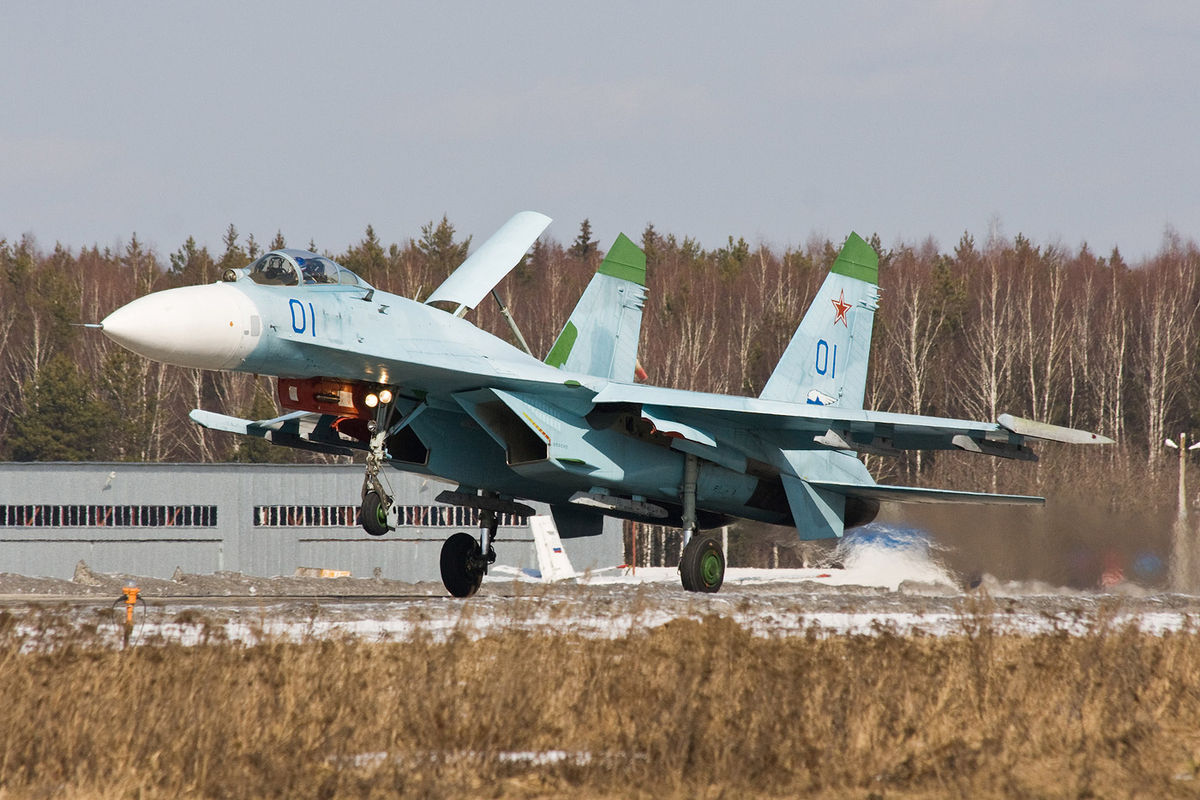Russia held a combat exercise involving its Sukhoi Su-27 fighters over the Kaliningrad exclave, repelling a missile and hitting “enemy aircraft,” days after the US-led North Atlantic Treaty Organization (NATO) concluded exercises and live missile firing drills in the Baltic Sea.
China ‘Scans’ India’s Backyard For Unhindered Submarine Ops; Uses Research Vessel To Gather Data
A EurAsian Times report previously talked about how the US and West are fortifying the Baltic Sea into a “NATO lake” with eyes on Kaliningrad, consistently holding joint naval maneuvers. Russia has responded with more war-like drills, releasing actual weapons on mock targets.
This also comes after Finland acceded to NATO, where the alliance shaped its plans to fortify the Baltic Sea from Russia.
While it is unclear if the Western plan is to pressure Russia into engaging resources in the Baltic to effect a reversal in Ukraine, the movement indicates a general thinking in that direction but probably does not hope for that exact outcome.
This also comes after the US Navy deployed a Typhon Mid-Range Capabilities (MRC) system that fires the SM-6 surface-to-air missile (SAM) from the Mark 70 launcher, repurposed for anti-shipping roles, on the Danish island of Bornholm on September 18.
While the Russian leadership is not worried or perceives a dire existential threat from NATO in the Baltic, unlike its West end, it still finds value in conducting aggressive exercises to deter the bloc from conducting its activities beyond a threshold.
Russian Su-27s “Shoot Down” Enemy Fighters
According to a report in TASS, more than ten aircraft crews of the Su-27 naval aviation units of the Baltic Fleet “practiced air combat with a mock enemy” over the skies of the Kaliningrad region.
“Mock enemy aircraft violated the state border of the Russian Federation and attempted to launch a missile and bomb attack on strategically important military targets in the Kaliningrad region,” the report said.

Upon receiving a signal about the invasion of “enemy” aircraft into the country’s airspace, Su-27 fighters took off from the airfield to intercept them. Having discovered and identified the “enemy” aircraft, they entered into battle and destroyed them.
The drills seemed to be oriented towards not refining the aerial combat skills of the fighters but honing the basic tactics-training-procedures (TTP) of the ground and technical crews in turning around the aircraft and establishing firm and tight coordination between the pilots, ground-based radars, and the maintenance teams.
“Flights and training of air combat elements were carried out both during the day and at night. The crews worked on accelerated preparation of fighters for takeoff, performed paired takeoffs and electronic launches of guided missiles at air targets,” the report added.
The Su-27 (NATO codename Flanker) is a multirole, highly maneuverable, all-weather, long-range fighter-interceptor. The aircraft is designed to gain air superiority and is used for missile and bomb strikes against ground targets.
Russia’s Kaliningrad: A Thorn In The Baltics
Western think tanks and analysts have often pointed to the heavily defended Kaliningrad, sitting between Poland and Lithuania, as a significant threat that allows Moscow to “project power” into the Baltics as the “cornerstone of Russia’s anti-access/area-denial (A2/AD) strategy.”
“If Moscow wanted to try capturing the Åland Islands, Gotland, or Bornholm, it would use Kaliningrad,” an October 2022 article in the Hudson Institute said.
Before the war, Moscow maintained approximately 25,000 Russian troops and security personnel, hundreds of tanks and armored vehicles, S-400 air defense systems, P-800 anti-ship cruise missiles, and sizable air and naval assets in Kaliningrad.
Since 2016, Russia has also maintained Iskander-M short-range ballistic missiles in Kaliningrad. From NATO’s perspective, the Iskander-M missile, which has a suspected range of 310 miles, can threaten Gotland and Bornholm with nuclear or conventional warheads.
Fort Kaliningrad Versus NATO Lake
Russia, therefore, has been conducting exhaustive live-fire exercises that practice defending the exclave. A drill in early April included close air support (CAS), ground attack, aerial bombing, and maneuvers by infantry fighting vehicles (IFV) and ships of the Baltic Sea Fleet.
These maneuvers saw Su-30SM and Su-30SM2 multi-purpose all-weather fighters, Su-24 attack aircraft, and An-26 military transport aircraft play out tactical episodes of missions for their intended purpose — fire support for ground units, destruction of command posts, armored vehicles, and manpower of a mock enemy, as well as conducting aerial reconnaissance.
Before that, in late March, another drill saw the S-400 Triumph SAM system being included. “The S-400 Triumf teams’ systems practiced response strategies upon receiving an alert regarding a notional airspace violation by an enemy aircraft,” the RuMoD had said.
“Su-27 fighters from a naval aviation unit acted as the intruders while the air defense (AD) crews detected, identified, tracked, and engaged them in simulated combat. The exercises concluded with the Triumf teams electronically engaging the targets,” it said.
US Itching To Field Typhon SM-6 Missile in Baltics
The US-NATO exercise with the Typhon/MRC SM-6 on September 18, which practiced “protecting convoys,” lasted a week. Another Typhon/MRC system missile is the naval anti-shipping version of the land-attack Tomahawk cruise missile.
According to Russia, the US has been trying to introduce one of these systems since 2017 in Europe, too, in the run-up to the collapse of the Intermediate-Range Nuclear Forces (INF) Treaty in August 2019. Russia believed the US wanted an excuse to quit the INF to be able to field these missiles.
The MRC/Typhon system bridges the range gap between two under-development missiles — the 482-km Precision Strike Missile (PrSM) and the 2776-km US Army’s hypersonic Long-Range Hypersonic Weapon (LRHW). In other words, it requires missiles to reach targets up to 1,800 km away.
- The author can be reached at satamp@gmail.com
- Follow EurAsian Times on Google News